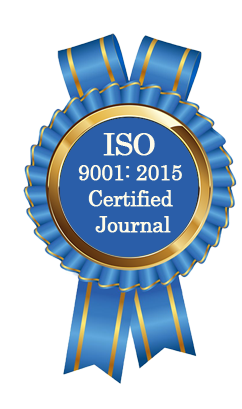| All | Since 2020 | |
| Citation | 105 | 60 |
| h-index | 4 | 4 |
| i10-index | 3 | 2 |
WJAHR Citation 
Login
News & Updation
Best Article Awards
World Journal of Advance Healthcare Research (WJAHR) is giving Best Article Award in every Issue for Best Article and Issue Certificate of Appreciation to the Authors to promote research activity of scholar.
Best Article of current issue
Download Article : Click here
Indexing
Abstract
BLOODY DIARRHEA AMONG UNDER FIVE YEAR’S CHILDREN
Abdullah Edan Abdullah, Abdulazzez Zobaa Mansour and Muayad Fathi Mahmood
ABSTRACT
Background: Dysentery is defined as the presence of fecal blood and mucus, associated with frequent, small loose bowel movements, fever is often present. It results from microbial invasion of colonic mucosa, with mucosal and sub-mucosal inflammation and destruction. Shigellosis is a classic cause of acute dysentery. It has a more harmful effect on nutritional status than acute watery diarrhea. Aim of the study: To find out the effect of sociodemographic characteristics parents on bloody diarrhea, most common causative agents in children, the association of breast and bottle feeding and their relation to bloody diarrhea. Patients and Methods: Case-control study including 164 children with bloody diarrhea and 100 children with watery diarrhea (as controls) under 5 years were studied prospectively in ALkhansaa Teaching Hospital and Ibn-Sena Teaching Hospital in Mosul from first of February to the 31 of December 2012. Results: Entamoeba histolytica was the more common isolated pathogen. It was identified in 63(38.4%) followed by shigella 11(6.7%) then the least was salmonella 6(3.65%) among cases. Infant age was 0-12 month which was the most vulnerable age group (42.6%), males were more affected than females (1.6:1). Urban area found in (58.5%), bottle feeding in (35.4%), while breast feeding is (12.2%), most of them had tap water supply (82.9%), while the other is (17.1%), but (79.3%) not boiling the drinking water. The growth percentage of patients below 5th centile is (60.9%). No dehydration which is more common (46.3%). Illiterate parents were more common (73.2%). Frequent bowel motion of more than 10 time /day was reported in (40.2%) of cases. leukocytosis was found in (40.0%) of cases, while in amebic bloody diarrhea was (2.6%). Conclusions: The study concludes that the infants 0-12 months old are the main affected group mostly males. Entamoeba histolytica remains the most frequent pathogen. Bottle feeding and non-boiling of water enhance bloody diarrhea while high educational status decreasing the infection.
[Full Text Article] [Download Certificate]
